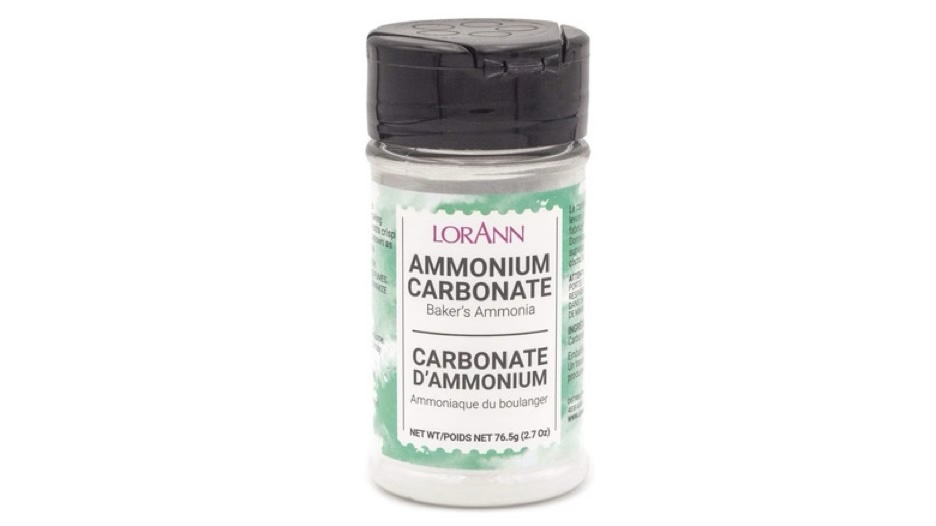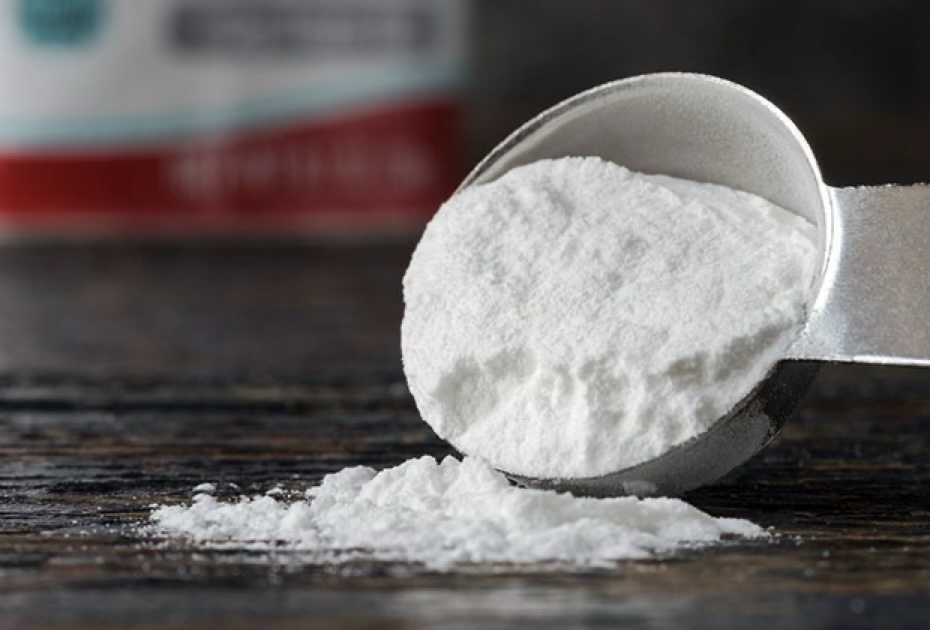You Want CRISPY? You Want Baker’s Ammonia!
This past weekend, our daughter, Sarah stayed with us. When she comes, she always has a new food or cooking/baking technique she thinks we should try. This time it was baker’s ammonia.

Are you acquainted with this product? I had no clue what it was or what to do with it. Sarah, however, knew all about it. She’d been using it for a few weeks to make her homemade granola recipe.
Baker’s ammonia is ammonium carbonate. It is also called "hartshorn". While for some the word ammonia may bring to mind household cleaning products, baker's ammonia has very little in common with the disinfectant aside from its smell. Instead, it's used as a leavening agent in baking, imparting cookies and crackers with a wonderfully crisp and airy texture.

Unlike baking powder or soda, it doesn’t leave an alkaline off-flavor in baked goods. It isn’t used for cakes or other large items because the ammonia gas cannot evaporate from these items.
You’ll notice an odor of ammonia while baking, but this will quickly dissipate and the baked product will not have an odor or taste of ammonia. Ammonium carbonate turns to 3 gases when heated: ammonia, carbon dioxide, and water vapor.
No powder residue remains in your baked goods after baking, but not all of the gases escape, which means a bit of an ammonia odor can linger for a while. Once the product cools, the remaining gases will completely evaporate.

Because baker's ammonia has a tendency to evaporate when exposed to air, it should be stored in a jar with a tight cover. It won’t spoil, but it will "disappear" if not stored properly.
The reason Sarah even knew about this ingredient was because she was trying to figure out how to turn out a truly crisp granola (like the kind in the grocery stores), rather than a chewy granola (like the kind she grew up on). After some research, she discovered that the secret to crispy anything is indeed, baker’s ammonia. Who knew? (Certainly not me, which is why she grew up on my homemade chewy granola.)
There IS a trick to using this stuff, though. I found out first hand. We made a batch of Sarah’s granola recipe and I learned the importance of timing and how to handle this interesting ingredient.

After the syrup started to boil, we quickly removed it from the stove and immediately added the baker’s ammonia. However, we had to cover our noses. Once this powder hit the hot liquid, it bubbled up like crazy and gave off some very nasty fumes. As mentioned above, this only lasts a few seconds, but nonetheless, you don’t want to breathe that stuff in.
It's best to use baker's ammonia only for products with a porous texture and little moisture, which is why cookies and crackers do so well with it. With this said, I’ll finish with an easy and delicious recipe for homemade cheese crackers that I found on a favorite site, www.bewitchingkitchen.com. Move over Goldfish®, there’s a new favorite cracker on the block!
Parmesan Cheese Crackers

1 cup all-purpose flour (143 grams)
1/2 cup finely grated Parmesan cheese
1/2 teaspoon baker's ammonia (OR baking powder)
1/2 teaspoon salt
1/8 teaspoon ground black pepper
1 teaspoon dry rosemary
4 tablespoons cold butter cut into pieces
3 to 4 tablespoons cold water
1 tablespoon kosher salt OR sea salt (for topping)
Directions:
Heat oven to 400F.
Combine flour, salt, ground black pepper, rosemary, grated parmesan cheese and baking ammonia in the bowl of a food processor. Pulse until combined, Add cubes of cold butter and pulse until coarse mixture forms.
Gradually, while pulsing, pour cold water until the dough starts to form a bowl as you process it. Scrape the dough out of the bowl onto a lightly floured surface, gather it with your hands, and flatten it into a disk. Roll out the dough 1/8 thick between 2 parchment sheets or silicone baking mats. Lightly dust the surface with flour.
Slice the rolled-out dough into about 1-inch-wide strips and then cut 1-inch strips perpendicular to the first set of stripes. Slide the baking sheet or silicone mat onto the baking sheet or rimless cookie sheet. Sprinkle with sea salt or kosher salt. If desired, use chopsticks to make two small holes in the center, or make the wholes with a small icing tip.
Bake crackers in the preheated oven for 10-12 minutes until the edges are golden.
Combine flour, salt, ground black pepper, rosemary, grated parmesan cheese and baking ammonia in the bowl of a food processor. Pulse until combined, Add cubes of cold butter and pulse until coarse mixture forms.
Gradually, while pulsing, pour cold water until the dough starts to form a bowl as you process it. Scrape the dough out of the bowl onto a lightly floured surface, gather it with your hands, and flatten it into a disk. Roll out the dough 1/8 thick between 2 parchment sheets or silicone baking mats. Lightly dust the surface with flour.
Slice the rolled-out dough into about 1-inch-wide strips and then cut 1-inch strips perpendicular to the first set of stripes. Slide the baking sheet or silicone mat onto the baking sheet or rimless cookie sheet. Sprinkle with sea salt or kosher salt. If desired, use chopsticks to make two small holes in the center, or make the wholes with a small icing tip.
Bake crackers in the preheated oven for 10-12 minutes until the edges are golden.
Recipe formatted with the Cook'n Recipe Software from DVO Enterprises.
 Alice Osborne
Alice Osborne
Weekly Newsletter Contributor since 2006
Email the author! alice@dvo.com
